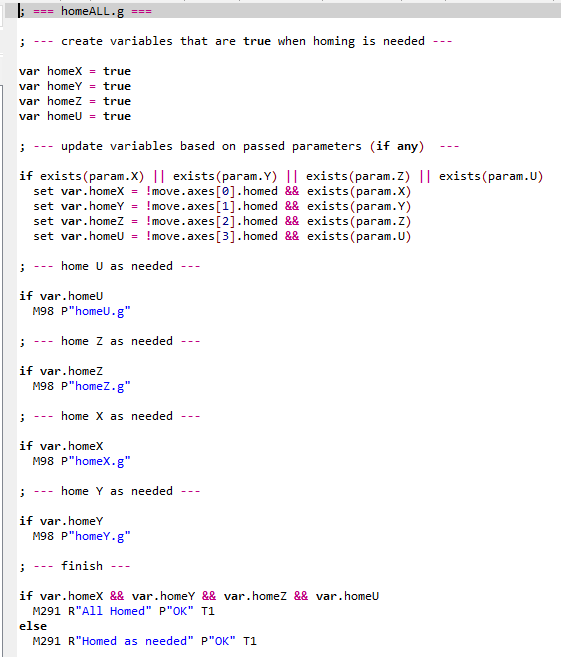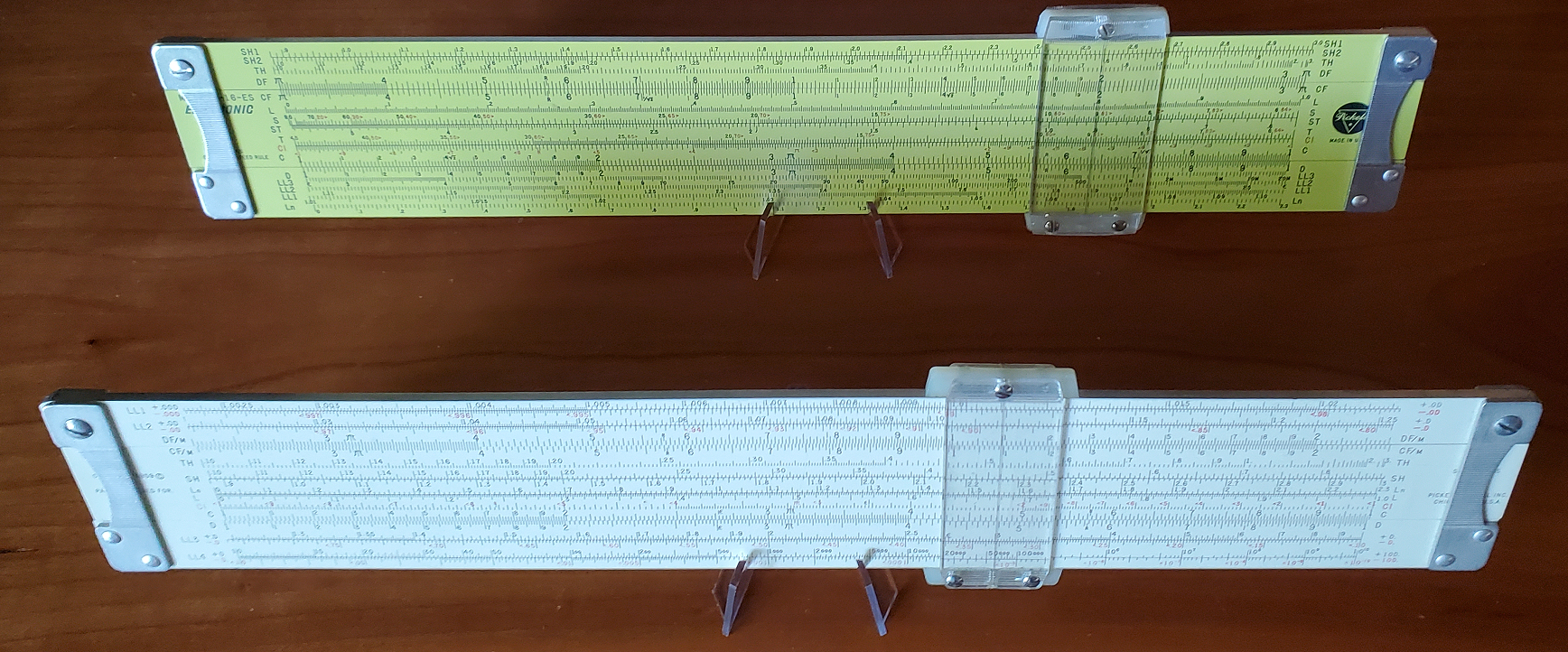Fine editor for working with Duet boards
-
Intel's Aedit running on MS-DOS was the best!
8" floppies, MCS-51 Dev system on wheels the size of a fridge.
And before that punched tape and cards!
You didn't run programs, you submitted them as a batch file overnight, to then find out you made a typo!
You "Younglings" are spoilt
-
@jujudelta Haha!
I do remember taking hours to programming a Sinclair ZX80 for it to beep, and finding I'd mis-typed something - or the magazine I'd tried to copy it from had an important piece of code cut with staples!
-
@jujudelta said in Fine editor for working with Duet boards:
Intel's Aedit running on MS-DOS was the best!
8" floppies, MCS-51 Dev system on wheels the size of a fridge.
And before that punched tape and cards!
You didn't run programs, you submitted them as a batch file overnight, to then find out you made a typo!
You "Younglings" are spoilt
My first "programming" was on IBM accounting machines. You inserted a bunch of jumper wires from one hole to another, on a big "patch panel", to control what the machines did.
They couldn't do very much but they were large and loud!
And when the rest of my friends were at schools learning Fortran I was learning ALGOL, of which I remember absolutely nothing.
Frederick
-
@fcwilt said in Fine editor for working with Duet boards:
My first "programming" was on IBM accounting machines.
My first micro had a "keyboard" with two buttons and 2x8 DIP switches: one DIP to enter the address, the other to enter a data byte. The red button transferred a byte into one of the 256 bytes of RAM, the green button ran the program. As display, I had 8 LEDs.
-
@infiniteloop said in Fine editor for working with Duet boards:
@fcwilt said in Fine editor for working with Duet boards:
My first "programming" was on IBM accounting machines.
My first micro had a "keyboard" with two buttons and 2x8 DIP switches: one DIP to enter the address, the other to enter a data byte. The red button transferred a byte into one of the 256 bytes of RAM, the green button ran the program. As display, I had 8 LEDs.
That must of been kind of tedious.
But it sounds something like an Intel microprocessor development system we had, which had a bunch of switches on the front. I remember we used them to enter the "boot loader" which then could read in the actual program from a paper tape reader.
Frederick
-
@fcwilt said in Fine editor for working with Duet boards:
That must of been kind of tedious.
Don't worry, the next machine I could work with was a IBM 5100

-
I still have a prototype HP Intel 486 machine in my basement. It was really hot stuff at the time. My processor was double clocked - from 20Mhz to 40Mhz. That was hot stuff in it's time, about 30 years ago.
-
@mikeabuilder said in Fine editor for working with Duet boards:
I still have a prototype HP Intel 486 machine in my basement. It was really hot stuff at the time. My processor was double clocked - from 20Mhz to 40Mhz. That was hot stuff in it's time, about 30 years ago.
Fun times for sure. I remember upgrading an IBM desktop from 4 to 6-8 Mhz - heady stuff.
Who dreamed where we would be today with gigahertz clock speeds, gigabytes of memory and terabytes of solid state drives.
Frederick
-
@fcwilt
Looks good
I have been using a free editor called
RJ Texted.
It also has FTP, but I haven't used it.
I did a syntax file that allows auto completion and does mouse over help hints for existing files.
https://forum.duet3d.com/topic/14637/reprap-g-code-syntax-now-part-of-rj-texted-text-editor/2?_=1654136072761The syntax file is no longer included as standard because it was changing too quickly.
I see that you can do syntax highlighters in your editor as well, so it would be good for someone to do so.
I looked at doing one for Notepad ++ but it was to clunky
-
@owend said in Fine editor for working with Duet boards:
@fcwilt
Looks good
I have been using a free editor called
RJ Texted.
It also has FTP, but I haven't used it.
I did a syntax file that allows auto completion and does mouse over help hints for existing files.
https://forum.duet3d.com/topic/14637/reprap-g-code-syntax-now-part-of-rj-texted-text-editor/2?_=1654136072761I see that you can do syntax highlighters in your editor as well, so it would be good for someone to do so.
There are many syntax highlighters available, some created by the programs creator, some by end users.
I haven't looked into how to make one but the Java one does give some highlighting.

Is highlighting an "art form" or are there specific rules for each type of file?
Frederick
-
@fcwilt said in Fine editor for working with Duet boards:
Is highlighting an "art form" or are there specific rules for each type of file?
I don't know if there are any rules per se.
Mostly they use some sort of regex or keyword list to determine what to highlight. -
@jujudelta said in Fine editor for working with Duet boards:
Intel's Aedit running on MS-DOS was the best!
8" floppies, MCS-51 Dev system on wheels the size of a fridge.
And before that punched tape and cards!
You didn't run programs, you submitted them as a batch file overnight, to then find out you made a typo!
You "Younglings" are spoilt
Sneaking in a batch of cards to print KISS's logo a few dozen times to give to friends!
-
@fcwilt said in Fine editor for working with Duet boards:
@mikeabuilder said in Fine editor for working with Duet boards:
I still have a prototype HP Intel 486 machine in my basement. It was really hot stuff at the time. My processor was double clocked - from 20Mhz to 40Mhz. That was hot stuff in it's time, about 30 years ago.
Fun times for sure. I remember upgrading an IBM desktop from 4 to 6-8 Mhz - heady stuff.
Who dreamed where we would be today with gigahertz clock speeds, gigabytes of memory and terabytes of solid state drives.
Frederick
My first was a Sinclair ZX81 (8 bit processor with 1K memory and cassette tape for "non-volatile" storage) circa 1981 that I bought in kit form. My second was a Texas Instruments TI-994A that I bought a couple of years later (so circa 1983) with a 16bit 3Mhz processor and separate VDP (Video Display Processor as they were called in those days).
By 1983 I was 30 years old and these machines were big steps up from calculators, which in turn were big steps up from slide rules and books of log tables that was all we had in my school days.
-
Until 2009 i've built special machines with a Z80 controller board (2MHz, 2kB RAM).
The complete controller board and all other electronic boards was soldered by hand...
I loved it to write programs in Z80 assembler. But the begin was hard!
-
@deckingman said in Fine editor for working with Duet boards:
By 1983 I was 30 years old and these machines were big steps up from calculators, which in turn were big steps up from slide rules and books of log tables that was all we had in my school days.
I still have mine.

The white one is a typical one while the yellow one was for all things electronic.
They are a bit more than 50 years old.
Frederick
-
Seeing as this has turned into an after school computer club thread, I'll share with you a "retro" computing device that you might find interesting.
https://github.com/MiSTer-devel/Main_MiSTer/wiki
It uses a FPGA board to do hardware emulation of old computers, consoles, arcade machines, etc. The list of supported devices is long. You can even emulate a PDP-1 if you like, and all the way up to a 486 class device capable of windows 95.
https://github.com/MiSTer-devel/PDP1_MiSTer

-
@phaedrux said in Fine editor for working with Duet boards:
this has turned into an after school computer club thread
… of grumpy old men

-
@infiniteloop said in Fine editor for working with Duet boards:
… of grumpy old men

.........of which, I am the oldest and many would say the grumpiest, therefore the most senior member of that auspicious club.

-
@deckingman - love the slide rules. When I was in high school, my class was the last year that pocket calculators were prohibited in chemistry class. We had to use slide rules. The reason was that pocket calculators were so expensive that it was considered an unfair advantage for those that could afford one.
I also learned programming with punchcards.
Good times...
-
You guys and your new-fangled toys ..... my first computer was an Abacus. Fingers and toes had to suffice before that!
I also did the bit with toggling individual bits with switches and then 'loading' the resulting 'word' into the computer ... .one friggin' word at a time! Punch cards was such a huge step up!
Ah the good old days .....